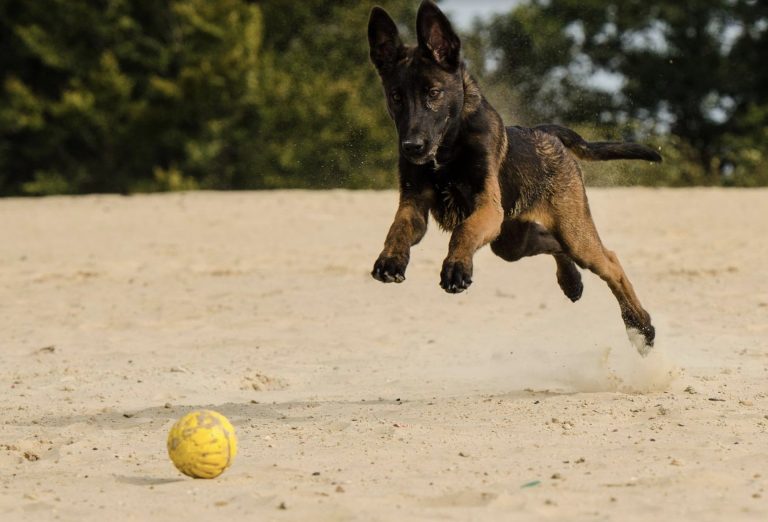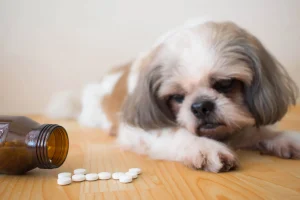How do we define impulse control disorder? It is a condition in which a person, or in this case your dog, has trouble controlling emotions or behaviors. Think of a dog that cannot stop whining, barking, or jumping at people when they greet someone. Often, these behaviors violate the rights of others or are in conflict with societal norms and law.
But do not worry. There are ways and simple exercises you can use to improve your dog’s impulse control. With consistency and proper training, you can have a calm and relaxed puppy who will patiently wait for your next command.
How to tell your dog has trouble with impulse control?
Let’s start with the obvious. Dogs are dogs. They are opportunistic creatures. What does that mean? Well, if your puppy can do something, the chances are he will do it. And if you reinforce that behavior (knowingly or unknowingly), your pet is even more likely to do something.
But what are some behaviors that show you need to practice impulse control with your puppy? Let’s see:
- Jumping up on people
- Eating things off the ground
- Darting out of doorways and car doors
- Barking at dogs and people
- Barking at triggers
- Lunging at dogs and people
- Chasing small animals and moving objects
- Demand barking
- Whining for attention and food
- Pulling on leash
What is actually Impulse control?
People get fascinated when they see your puppy standing calm while you take photos, or waits for you to do something. You can achieve that calm state only by practicing impulse control
What is impulse control? Well, it is emotional self-control, simply said. Talking about it more, it is a foundation for good manners. You need to teach your dog to control its desires, no matter what breed you have.
For example, hound dogs might have a hunting instinct. Some dogs cannot wait for you to throw the ball. The trick is to teach your dog that only a calm behavior will get them the reward they want.
Poor self-control almost always leads to undesirable behavior. Many bad behaviors are actually the result of poor impulse control.
A patient dog will be better behaved and less demanding. It is great for your dog, and good for you. Rather than your dog feeling frustrated by its need for instant gratification, it will feel calm and more in control of its environment.
There are many ways to teach your dog impulse control. And they are easy to practice at home.
Practicing impulse control and focus on you
How to practice focus on you every day? Well, let’s start with exercise number 1.
Place a treat in one hand, and move it away from you. Wait for eye contact, or your puppy looking at you, and then mark with “good job”, then reward your puppy with the treat
Be careful to mark the moment your dog looks at you. If you miss it, and you let your dog look at the treat multiple times, you will confuse your puppy. Mark and reward every eye contact, be it two seconds, a second, or 10 seconds.
Now, exercise Number 2. Place a treat in front of your puppy. But do not let it eat it. Wait for eye contact with you, which is your dog’s way of saying can I have it? Once you get eye contact, mark with good job and allow your pet to eat it. But do not let your dog eat it on its own. Food comes from you, not from the ground.
I like to call exercise Number 3 “the art of doing nothing”. It is such an easy practice you do absolutely anywhere. It is a very simple concept. You ask your dog to go place, lie down, sit, or anything else. For a couple of minutes, just do nothing. It teaches your dog to chill while other things are happening around them. I practice this with Milo almost every time we go out for a walk.
Now, if you have a reactive dog, start slowly. Do not expect your dog to sit still for 15 minutes on Day 1. Start with a few distractions and gradually increase length and level.
Start practicing at home
The most important thing about teaching impulse control is starting at home and implementing structure at home. Your home is where there are fewer distractions. You cannot expect your dog to master each exercise and perform it without a mistake when you are out there in the wild.
You have to start at home and establish structure and boundaries. Boundaries and structure might be challenging for humans. Yet, dogs thrive on them. Structure and rules are a must.
How to set up the structure? Well, follow each exercise, or each rule with reinforcement. That teaches your dog that if he follows rules and boundaries, he gets rewarded.








2 Responses
I rescued my Rosie about 2 months ago. Rosie has an awful past. She was forced to have to litters and released to wonder the street. Rosie is a 2 year old Maltese. She doesn’t do much. She lays on the couch all the time. She just stared to eat well. I have to carry her outside to go potty. When I’m with her sitting outside she just runs back and forth like she’s being chased. I love her so much. I will never give up on her. Any suggestions?
Patience, patience, and more patience. There is a saying that the time needed to change a bad behavior into a good one is 10:1. Which means if your dog has done something bad constantly for 1 month, you need 10 months to turn it into a good behavior. Now, I am not that much on the extreme, but the reality is your puppy has been traumatized for almost 2 years. That means she has still problems understanding how to act like a dog.
My suggestion is to hand feed her as much as possible. This will improve your bond with her. When she is comfortable eating and asking for more, coming to eat to your hand, you can start doing some little things. Like sit, move back, come, sit, and feed her. The more she trusts you, the more comfortable she will be with you and everything else outside
Do NOT, I repeat, DO NOT bring her to a dog park expecting her to socialize with other dogs and fix the issue. You can move to that after like say six months from now, depending on how your bond with her is going
As for the outside time, she probably has some bad experience of being outside (forced to have litters means dogs were doing after her). Start playing with her outside. There are countless of games you can play. Check my other articles, just type games in the search and you will surely find something. Try different games until you find something both you and Rosie are comfortable with. The goal is to make her outside time pleasurable. You can even just sit outside on a blanket and chill.
Hope I have helped you a bit